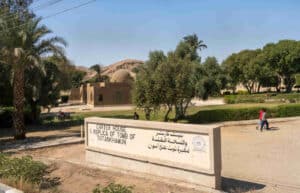In this post, we will discuss mahallabiye or mahalabia, which many know as Arabian custard and, therefore, a very popular dessert in this country. We have already covered many of Egypt’s gastronomic delights in depth: ful medames, mahsi, khosari… And many of them, sweet delicacies, such as baklava or ruz bil laban. But as the list does not end there, far from it, we now address this other classic. Take note because, in addition to being delicious, they are very simple to prepare.
Origin and Name of Mahalabia
Mahallabiye is the transcription to the Latin alphabet of its corresponding word in Arabic. Therefore, you may also see it written as mahalabia or similar, depending on each place or even the country in which you are. And it seems that this dessert is
What it Contains and how it is Prepared
One of the most outstanding characteristics of mahalabia is its simplicity, not only because of how easy it is to prepare but also because of the few ingredients that are needed for its preparation. And, to the surprise of many, it does not contain egg, which is one of the great differences with the classic custards of other countries.
The fundamental ingredient is milk, preferably whole. Sugar is also essential to sweeten the recipe, in this case with a proportion of 10% with respect to the milk. And the third key ingredient to achieve the characteristic thickness of mahalabia is cornstarch, although many also prefer fine corn flour.
With these three ingredients, the base of the dessert is prepared: the milk is boiled with the sugar and, without removing from the heat, the cornstarch is poured little by little while stirring slowly, in a circular direction, so that it thickens little by little. When the desired consistency is reached, it is removed from the heat and left to rest. At this point, some add a little orange blossom water and continue stirring so that it integrates well and adds another nuance of sweetness.
When that creamy preparation reaches room temperature, it is time to give it the final touches. First, serve it in its corresponding glasses or containers, individually. Then, add its characteristic
When and where to Take
As you have seen, mahalabia can be taken at any time of the year, but it is in summer when it reaches its greatest popularity. You should keep in mind that it is best to cook them several hours before taking it, since it will take time to cool to room temperature and in the refrigerator.
This dessert is very popular in Egyptian restaurants, sometimes ‘competing’ with ruz bil laban. Because it is a dessert to be tasted in a glass and with a spoon, it is usually found in places where the consumer can sit down and enjoy it calmly. And of course, many families are encouraged to prepare it at home, because of its simplicity and the ingredients so close at hand with which it is prepared. Without a doubt, a dessert so delicious that you should not return to your country without having tasted it before during the trip.



